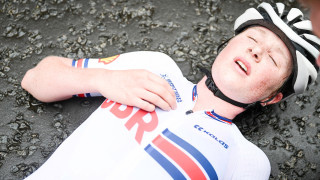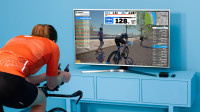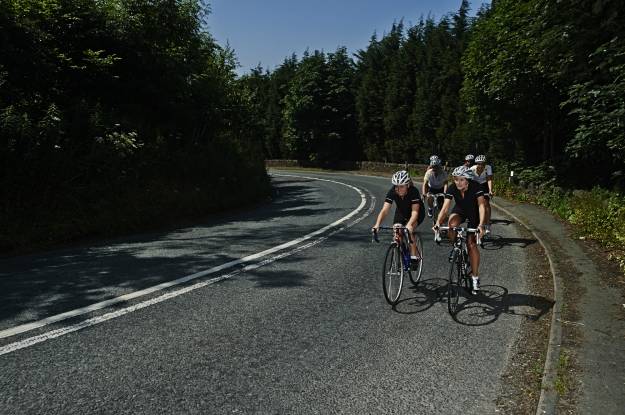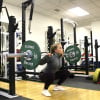Knowledge Level: Intermediate
It may not be the end of your season, but with the winter looming taking some time off can be restorative for mind and body, help to prevent burn-out and result in a more consistent and productive winter.
How do I know if I need time off?
Take a look back over your last six months or so of training and see when you last had some time off structured training. Even if you haven’t been following a structured training plan, if you’ve been churning out the same sessions and mileage week in, week out, chances are you could do with a break. A well designed structured training plan, such as the British Cycling Digital Plans, will include regular recovery weeks.
Taking some time out before you notice a stagnation or drop off in performance (see below) is the ideal and, by catching it early, you’re more likely to bounce back from your break stronger.
Are you finding that you’ve hit a bit of a plateau, aren’t making the progress you were or are even maybe noticing a slight drop in performance? These are also signs that backing off a bit now would be a good idea.
A lack of motivation to ride, poor sleep, never feeling fully recovered and a susceptibility to colds and other bugs are all signals that suggest strongly that it’s time for a break.
A final clue can be found by looking back at previous years. Did you manage to train consistently thought the winter or, due to illness, injury or simply a lack of motivation, did you end up falling off the wagon mid-winter? If it was the latter, did you take any time off in the autumn? If not, you’ve nothing to lose by giving it a go this year.
How long should I take off?
It really depends how deep a hole you’ve dug yourself into. If you aren’t noticing a drop in performance or any of the more serious indicators of possible overtraining then a week or maybe two will probably be enough to recharge your batteries and fire up your motivation.
However, if you haven’t managed to spot the warning signs, taking three or four weeks off might be advisable to allow your body to really reset.
Won’t I lose my hard gained fitness?
We’re not suggesting you spend the entire time on the sofa or even that you stop riding completely so, although you might see a slight drop-off in your very top-end fitness, any losses will be minimal. In fact, it’s not unusual to come back off a lay-off and find that your performance has actually improved as you’re actually fully rested and recovered for the first time in a long time.
Even if you do lose a bit of fitness, this will easily be off-set by and rediscovered once you start training again with improved freshness, focus and motivation.
A final point to consider regarding this question is, does it matter? Especially if your focus is sportives or even racing next season, a slight loss of fitness at this time of year is neither here nor there. Okay your ego might take a little bit of a hit on the weekend group ride but just remind yourself that you’re training smart, are more likely to train consistently through the winter than the October-December flyers and no-one really remembers who was first in the café stop sprint.
What should I do during my time off?
As previously mentioned, you don’t need to stop riding but try to switch the focus to fun rather than fitness. Try leaving the power meter or heart rate monitor at home, ride with friends and family and rediscover the social side of cycling.
Maybe take advantage of the time to try a new cycling discipline. Head to a trail centre and hire a mountain bike or, if you live near an indoor velodrome, why not try a Taster Session.
Explore some off the bike training options that you might be able to utilise throughout the winter. This could be hitting the gym for some dedicated strength work or something more restorative such as Pilates or Yoga.
If you’ve been riding it hard all summer, how about treating your bike to some R&R? Either give a basic service yourself or book it into your local bike shop. If you don’t have a dedicated winter bike, take the time to ensure that your bike is set-up ready for winter riding.
Is your indoor training set-up ready to go for the winter? If not download our free Ultimate Guide to Indoor Training eBook.
Finally take time to have a look back through the year, especially last winter and be honest with yourself what you could do better and what areas of weakness could do with working on. Look ahead to some target events in 2021 and, working back from the, fit some Training Plans in place.
How do I get started again after my break?
You’ll know if you’ve got your break just right as you’ll be champing at the bit and raring to get on with some quality sessions. Temper that enthusiasm a little though as it’s a long haul though the winter and you don’t want to undo all the good your break has done you.
The first real session you should do, as is the case with all of our British Cycling Digital Plans, is a Threshold Test. This will ensure, whether you train using heart rate or power, that your zones are correct, up to date and that you’ll be training optimally.
What should I be doing during late autumn and the first part of the winter?
The key thing is to find a training plan that’s realistic for you and that you’ll be able to stick to consistently. It’s far too easy to set the bar too high and then, once you inevitably start missing or not finishing workouts, to slip into an all or nothing mindset and end up opting for nothing. Again learn from the past and look back at last winter. Don’t just look at the good weeks, look at what you consistently managed and base your plans around those.
There’s no need to be piling pressure on yourself during the winter and definitely no need to be racking up huge mileage in the outdated pursuit of base fitness. Even if you just keep things ticking over until well into the New Year, that’ll still leave you in a good place for spring and early summer events.
It’s also the perfect time of year to focus on some off the bike training such as strength training. Not only will this benefit your cycling directly but it’ll help to safeguard you against injury and has proven long-term health benefits that cycling alone can’t deliver.
Take a look at our British Cycling Digital Training Plans and two to definitely consider for November onwards are our 12-Week Real Life Winter Training Plan and the 8-Week Time Efficient Indoor Training Plan.














